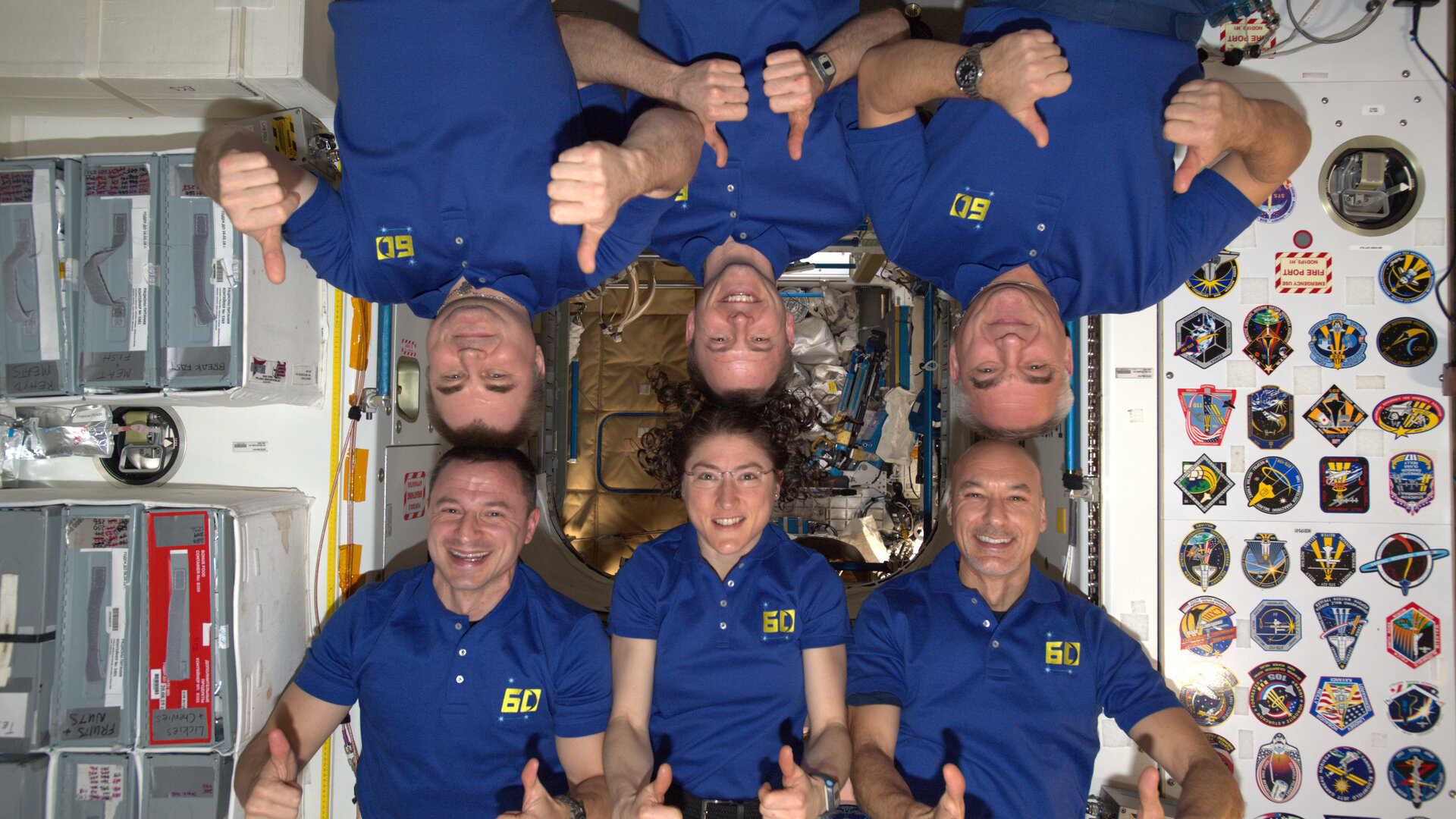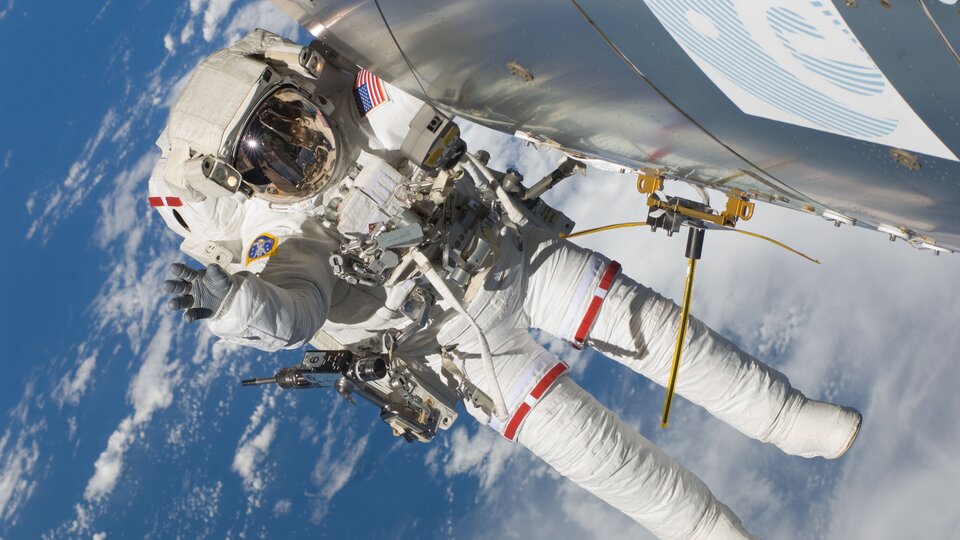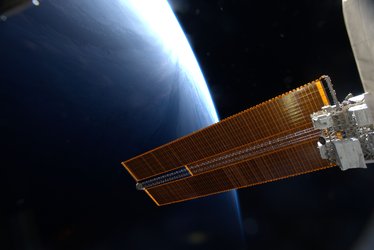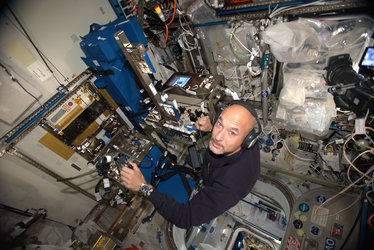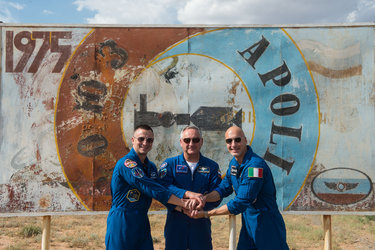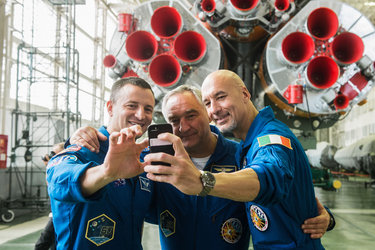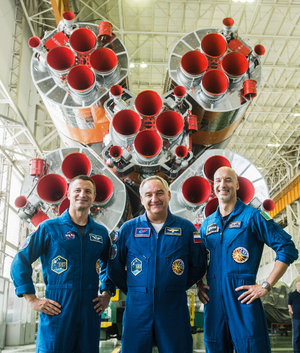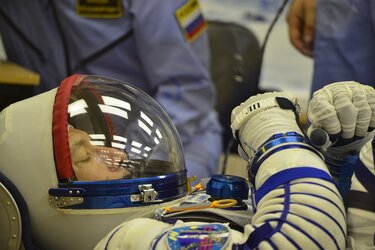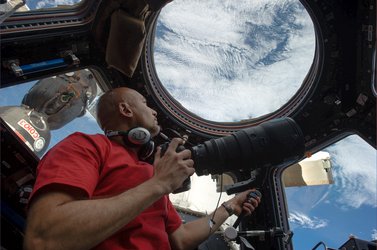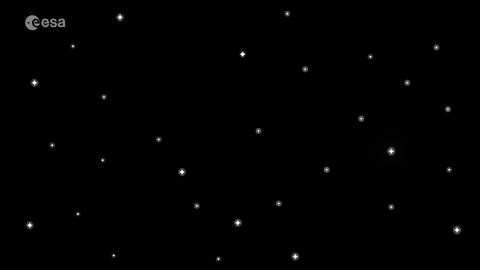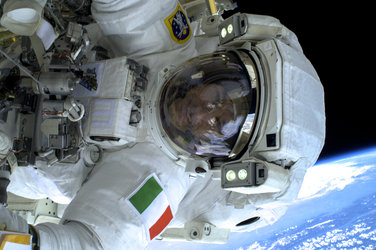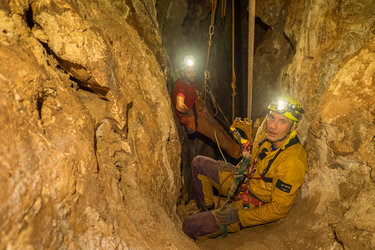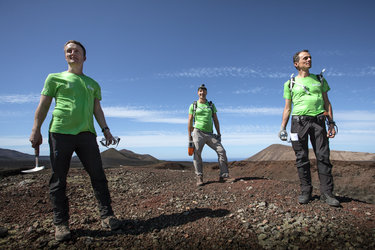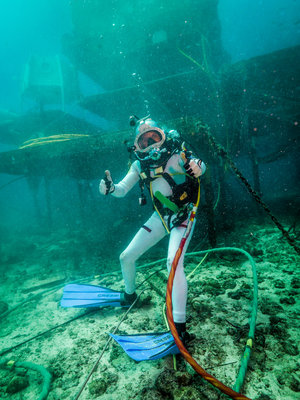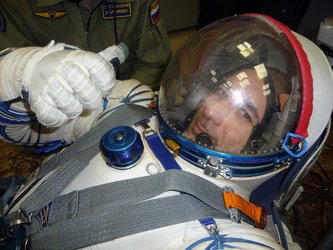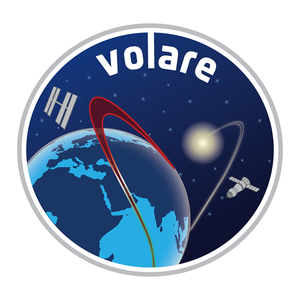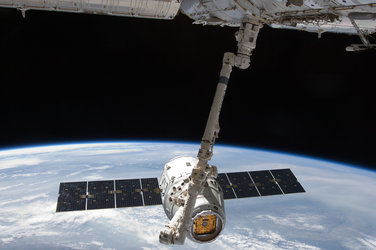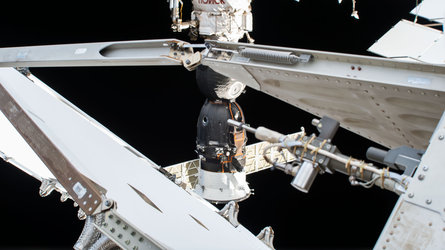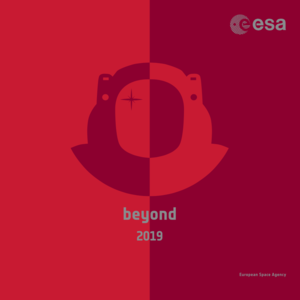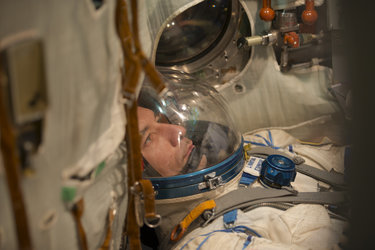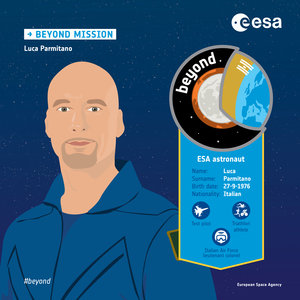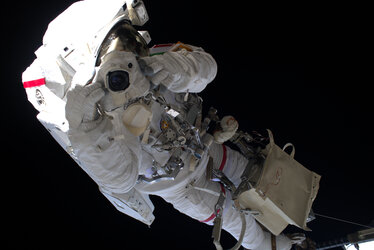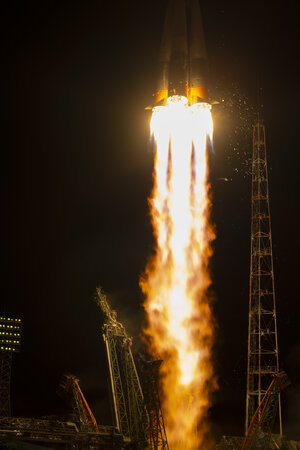Bones, bacteria and nutrition – European research on Space Station
For eight days the International Space Station operated at full capacity with nine astronauts. With the extra set of hands in space the science teams on Earth got busy scheduling the astronauts’ days to get the most research time out of their time in orbit.

United Arab Emirates astronaut Hazzaa Al Mansoori completed a number of experiments for European researchers, adding more data to the pool of results. Just a day after arriving, Hazzaa set up the Fluidics experiment that consists of two transparent spheres containing liquid that can mimic satellite fuel tanks as well as help researchers understand ocean currents.
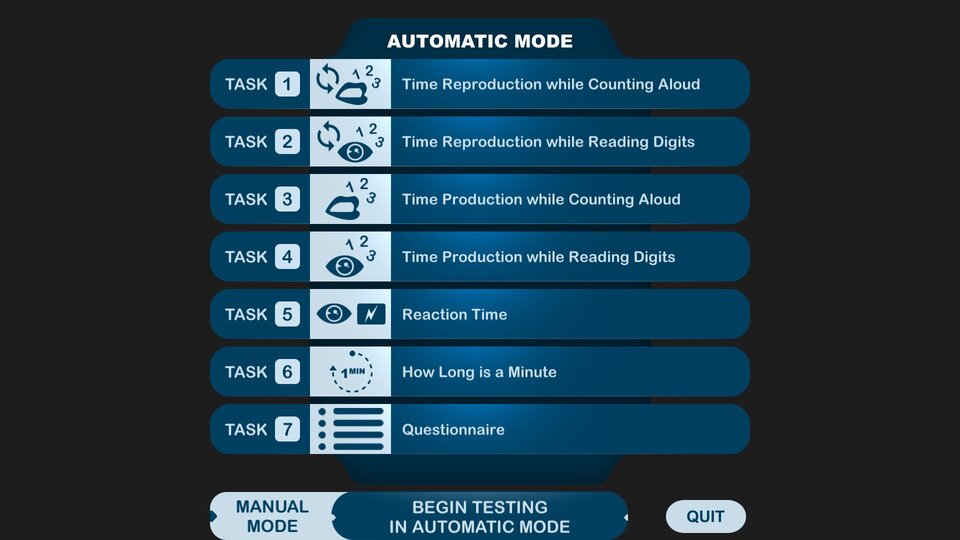
Hazzaa conducted his second and last session of the Time experiment on 3 October. Time flies, the expression goes, but what happens to time when you are flying at 28 800 km/h around Earth? Hazzaa wore a virtual reality headset to avoid distraction and followed onscreen instructions to test his reaction speed and estimation of time. Tasks included guessing how long a blue square remained on the screen, pressing a button for a set number of seconds and pressing stop after estimating the passing of a minute.
Time probably flew for Hazzaa who has already returned to Earth alongside NASA astronaut Nick Hague and Russian commander Alexei Ovchinin in Soyuz MS-12.
EveryWear is everywhere
The astronaut app EveryWear was developed for Thomas Pesquet’s Proxima mission in 2016, and it is now a useful aid for recording all kinds of scientific data. On 2 October, ESA astronaut Luca Parmitano and NASA astronaut Drew Morgan wrapped up their third and last session of the Acoustic Diagnostics experiment. The session needed to be scheduled on their 80th day in space. Similar to the Time experiment but with sound, the astronauts wore headphones and answered questions on what they heard using the EveryWear app. The experiment will assess how hearing is affected in weightlessness as well as measure background noise on the International Space Station. Listen to this episode of ESA’s Beyond podcast for more on sounds in space:
Luca and Drew also did a second session for Grip, both in a seated and standing position. This experiment monitors how astronauts' brains assess grip force when reaching for an object.

Luca completed a third session of the NutrISS experiment that is charting his eating habits over five days, also using the EveryWear app. This experiment is helping mission designers adapt an astronaut’s diet when in space to ensure they get enough energy in preparation for longer missions farther into our Solar System. The researchers are testing a hypothesis that a high-protein diet might limit bone and muscle loss in space.
Linked to bone loss is the EDOS-2 experiment, Russian cosmonaut Alexander Ovchinin did a third and final in-flight session by taking samples of his blood. In true International Space Station style, NASA astronaut Christina Koch put the samples into the Station’s –80°C European-built freezer where they will stay until they are returned to Earth for analysis. Astronauts lose up to 1% of their bone mass each month they stay in space – a form of advanced osteoporosis – and finding way to limit this is important for further exploration. For researchers, having a pool of healthy subjects to study that experience acute osteoporosis is a fascinating opportunity, as osteoporosis on Earth takes years to develop and is harder to study.
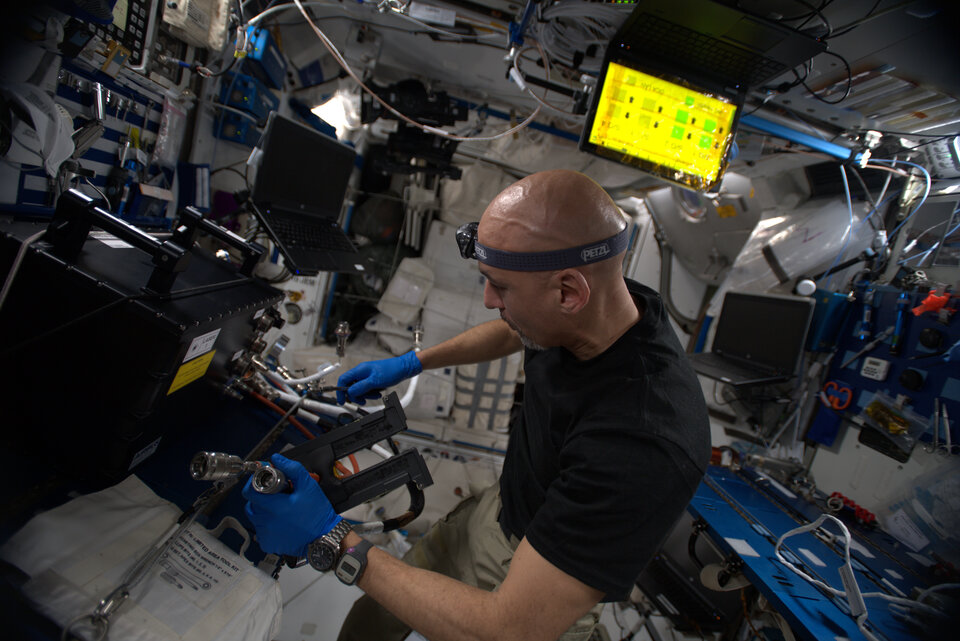
The bubble-boiling experiment Rubi was reactivated on 1 October for fine-tuning and a second run. This experiment will continue blowing bubbles unattended while infrared and normal cameras as well as temperature and pressure sensors keep of how heat dissipates with the data sent to researchers on ground.
On 10 October Russian Cosmonaut Alexander Skvortsov set up Europe’s Electromagnetic levitator so ground control could programme it ahead of another batch of melting and solidifying metals in microgravity. This facility is helping understand the deeper secrets of metallurgy and space-age alloys.
Constant monitoring

A number of experiments on the Space Station run quietly in the background without needing much attention. Drew placed a new set of Matiss sample holders in the European Columbus laboratory where they will remain for the next six months collecting dust and growing bacteria. The experiment will monitor how bacteria form biofilms that resist cleaning. The materials in this set have been selected for their hydrophobic qualities, hopefully bacteria will have a hard time setting up home, making for cleaner, more healthy spacecraft.
Luca also did periodic check of the DOSIS-3D radiation monitors dotted around the Space Station. These devices are charting radiation throughout the outpost to understand how to best protect astronauts from cosmic rays in the next generation of spacecraft.
Outside the Space Station, the space storm-hunter ASIM continues to track lightning events above thunderclouds while the Vessel-ID antenna monitors global marine traffic. The receiver underwent a “periodic maintenance powercycling performed by deactivation and reactivation of SUP1 J03 outlet” on 9 October, in other words, it was turned off and on again. Even in space it is good practice to try turning it off and on again.


